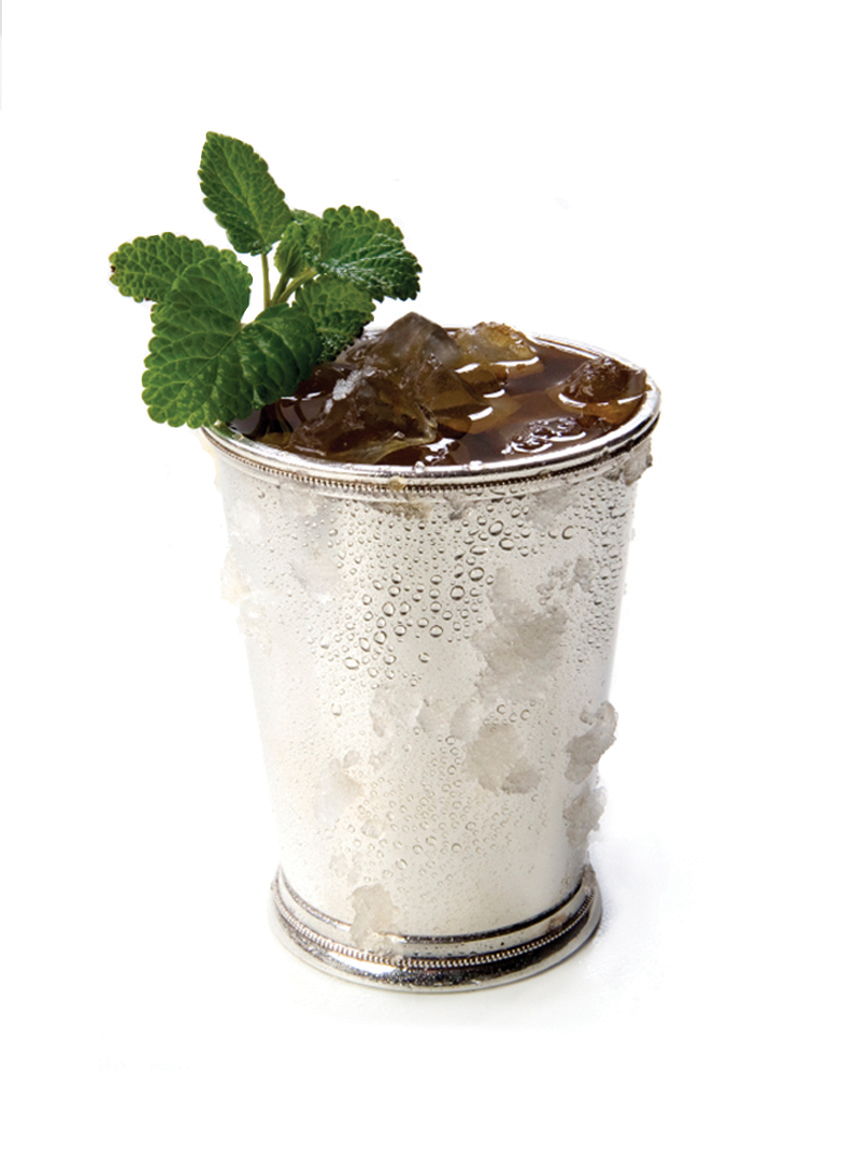I vividly recall my parents’ friends at cocktail hour sipping burnt sienna–hued drinks in glasses that now cost a small fortune in vintage shops. Back then, besuited men and women whose bright lipstick left red smears on the glasses’ rims gathered near the fireplace in our knotty pine–walled “finished” basement in the winter. In the summer, friends were known to sit in the living room of the house in Oak Bluffs sipping and talking. (Porch drinking came later!) I remember bottles with evocative names like Early Times, Four Roses, and I.W. Harper, and the adults joking that the crow’s head on the Old Crow bottle was turned to the side because “too much Old Crow will make you ’shamed!”
 I cut my own drinking teeth on Jim Beam and Maker’s Mark. Indeed, bourbon and ginger ale is still my go-to drink when I’m in the South or in a bar that has moose heads and/or license plates on the wall, where the last dust-covered wine bottle was opened in 1980. During my middle drinking years, bourbon moved upscale at Café Beulah in New York, which had the first bourbon bar that I’d seen. There, I was introduced to Buffalo Trace, Blanton’s, and Woodford Reserve.
I cut my own drinking teeth on Jim Beam and Maker’s Mark. Indeed, bourbon and ginger ale is still my go-to drink when I’m in the South or in a bar that has moose heads and/or license plates on the wall, where the last dust-covered wine bottle was opened in 1980. During my middle drinking years, bourbon moved upscale at Café Beulah in New York, which had the first bourbon bar that I’d seen. There, I was introduced to Buffalo Trace, Blanton’s, and Woodford Reserve.
Bourbon, though, is very much a born-again liquor and very much of the moment. Today, the same folks who five years ago would have never contemplated hoisting a glass of brown liquid are now bragging about snagging one of the very few bottles of “Pappy” – Pappy Van Winkle’s Family Reserve, that is – and carrying flasks again.
It is only fitting that this quintessentially American liquor should have its day. Congress declared it a “distinctive product of the United States” in 1964 and exports of bourbon and Tennessee whiskey exceed one billion dollars. Legal definitions of what bourbon truly is differ by country, but federal standards declare, among other things, that bourbon made for American consumption is produced in the U.S. from a mixture that is at least 51 percent corn. It must be aged in new, charred oak barrels and distilled to no more than 80 percent alcohol. About 95 percent of all bourbon is produced in Kentucky.
Bourbon’s exact origins are mysterious, but it is often said that Scots-Irish and other European settlers brought their distilling skills with them to eastern Virginia, into a geographic area known as Old Bourbon for the French royal family. The name of the county became the name of the liquor that originated in it. The story of bourbon is much too convoluted to be told here, but it is detailed (with recipes) in the eminently readable tome simply titled Bourbon by my friend and occasional drinking buddy Kathleen Purvis.
Bourbon is a year-round tipple, but the classic mint julep is all too often connected only with the Kentucky Derby. However, for many bourbon lovers, it is a summer drink par excellence, especially on the Vineyard, where some of the most aromatic mint grows wild. So polish up your silver julep cups and remind your friends that you can make more with mint than a mojito.
Mint Julep
Makes one drink
- 5 or 6 sprigs fresh peppermint
- 2 teaspoons Demerara sugar, or to taste
- Crushed ice
- 3 ounces bourbon
Strip the leaves from two of the peppermint sprigs and place them in the bottom of a bar glass with the sugar and a dash or two of bourbon. Muddle the ingredients. When the mixture is well pulverized, strain and pour it into a well-chilled julep tumbler. Add the crushed ice and the bourbon and stir well. Garnish with the remaining bruised
peppermint sprigs and a straw.






